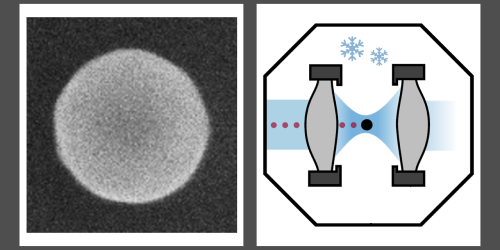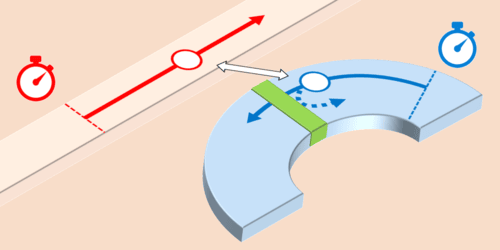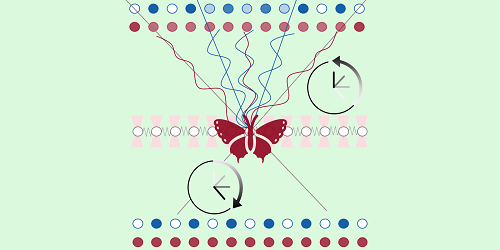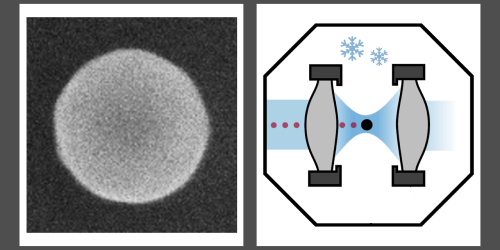August 19, 2025• Physics 18, s107
Researchers have expanded the quantum wave function of a levitated nanosphere, a step toward future tests of quantum physics.
Adapted from M. Rossi et al. [1]

Adapted from M. Rossi et al. [1]
Physicists have performed interference experiments with atoms and molecules, demonstrating that these objects can seemingly be in two places simultaneously. But creating such superpositions with larger objects has proven difficult because of their highly localized wave functions. New experiments have increased the spatial extent of a levitating nanoparticle’s wave function by a factor of 3, offering a path toward large-object quantum experiments [1].
An object’s location is always uncertain to some extent because of thermal and environmental effects. Yet even if that object is cooled and isolated, there remains a quantum uncertainty given by the spatial extent of the object’s wave function. The width of the wave function of a single trapped atom in its ground state is about 10 nm. This is much larger than the atom itself, allowing it to seemingly be in two places at once. By contrast, a trapped nanoparticle with a billion atoms has a much narrower wave function, with a width of around 10 picometers (pm).
Expanding a wave function is possible, but the smallest disturbance can collapse it to a localized state. Lucas Novotny from the Swiss Federal Institute of Technology (ETH) Zurich and colleagues took on this challenge, using a silica nanoparticle held in an optical trap. After a cooling step, the team slowly loosened the trap, causing the nanoparticle’s wave function to spread out. Position measurements revealed a wave-function width of 73 pm, which is 3 times the initial value.
The observed wave-function width is still a thousand times smaller than the nanoparticle’s size. To expand it further, Novotny says, one possible strategy is to place the nanoparticle in free fall. Such an experiment could test whether large objects exist in superpositions (as quantum physics predicts) or whether their wave functions always collapse to classical states (as some alternative theories assume).
–Michael Schirber
Michael Schirber is a Corresponding Editor for Physics Magazine based in Lyon, France.
References
- M. Rossi et al., “Quantum delocalization of a levitated nanoparticle,” Phys. Rev. Lett. 135, 083601 (2025).
Subject AreasQuantum PhysicsNanophysicsRelated Articles
 Quantum InformationBridging the Quantum Frequency GapAugust 6, 2025
Quantum InformationBridging the Quantum Frequency GapAugust 6, 2025
A new device can freely and efficiently change the frequency of microwave signals, enabling communication between otherwise incompatible quantum systems. Read More »
 Atomic and Molecular PhysicsQuantum Scrambling Goes AnomalousJuly 31, 2025
Atomic and Molecular PhysicsQuantum Scrambling Goes AnomalousJuly 31, 2025
Evidence that quantum information can get scrambled unconventionally in a chain of atoms could improve our understanding of quantum many-body dynamics. Read More »
